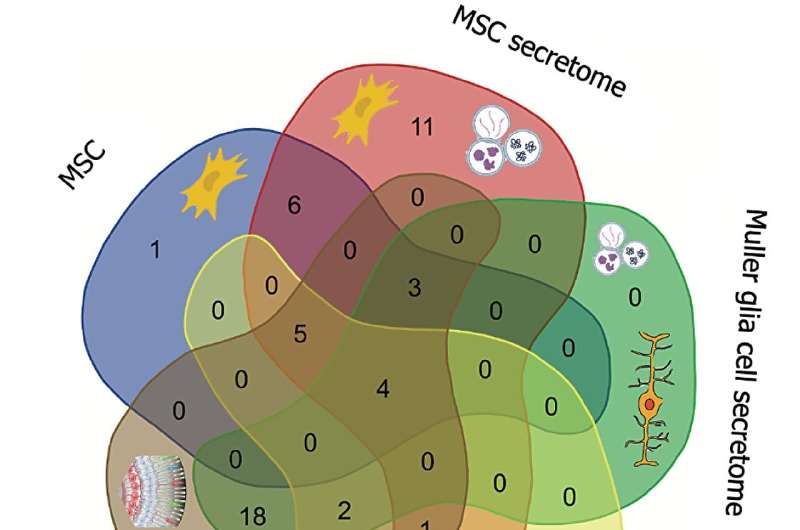This article has been reviewed according to Science X's editorial process and policies. Editors have highlighted the following attributes while ensuring the content's credibility:
fact-checked
proofread
Human retinal secretome: A cross-link between mesenchymal and retinal cells

In recent years, mesenchymal stem cells (MSC) have been considered the most effective source for regenerative medicine, especially due to released soluble paracrine bioactive components and extracellular vesicles. These factors, collectively called the secretome, play crucial roles in immunomodulation and in improving survival and regeneration capabilities of injured tissue.
Recently, there has been a growing interest in the secretome released by retinal cytotypes, especially retinal pigment epithelium and Müller glia cells. The latter trophic factors represent the key to preserving morphofunctional integrity of the retina, regulating biological pathways involved in survival, function and responding to injury. Furthermore, these factors can play a pivotal role in onset and progression of retinal diseases after damage of cell secretory function.
In a new review published in the World Journal of Stem Cells, a research team has delineated the importance of cross-talk between MSCs and retinal cells, focusing on common/induced secreted factors, during experimental therapy for retinal diseases.
The cross-link between the MSC and retinal cell secretomes suggests that the MSC secretome can modulate the retinal cell secretome and vice versa. For example, the MSC secretome can protect retinal cells from degeneration by reducing oxidative stress, autophagy and programmed cell death. Conversely, the retinal cell secretome can influence the MSC secretome by inducing changes in MSC gene expression and phenotype.
More information: Luigi Donato et al, Human retinal secretome: A cross-link between mesenchymal and retinal cells, World Journal of Stem Cells (2023). DOI: 10.4252/wjsc.v15.i7.665





















